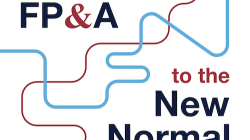In this article, the author describes the Systems Thinking approach and shows how it impacted FP&A and Management, referring to his experience in the automotive industry.
Getting a good compensation model is a key to attracting and retaining the best talent. But how can companies design the right bonus scheme — so they motivate professionals while protecting profitability? Let's explore the issues.
In recent years, organisations all over the world have been undergoing a rapid digital transformation. New tools and technologies are opening up the possibility of more collaborative business processes, including planning.
The organisation used to spend over 52 weeks on planning, but with an accuracy of only 92% -- low when compared with the resources allocated.
The New Normal means that planning is no longer an extrapolation of the past. Similarly, business drivers that worked last year may no longer be relevant for the future. The reality is that organizations face multiple possible futures. Each one can be triggered by a crisis or an unforeseen event that will require the company to adjust or even change course.
So how should FP&A adapt to this New Normal?
In anticipation of turning the pandemic corner, companies are contemplating the return to the office or some form of the “Next Normal” working model. So how will your FP&A team find optimal ways of working in this new and evolving landscape?
Pagination
Subscribe to
FP&A Trends Digest

We will regularly update you on the latest trends and developments in FP&A. Take the opportunity to have articles written by finance thought leaders delivered directly to your inbox; watch compelling webinars; connect with like-minded professionals; and become a part of our global community.






